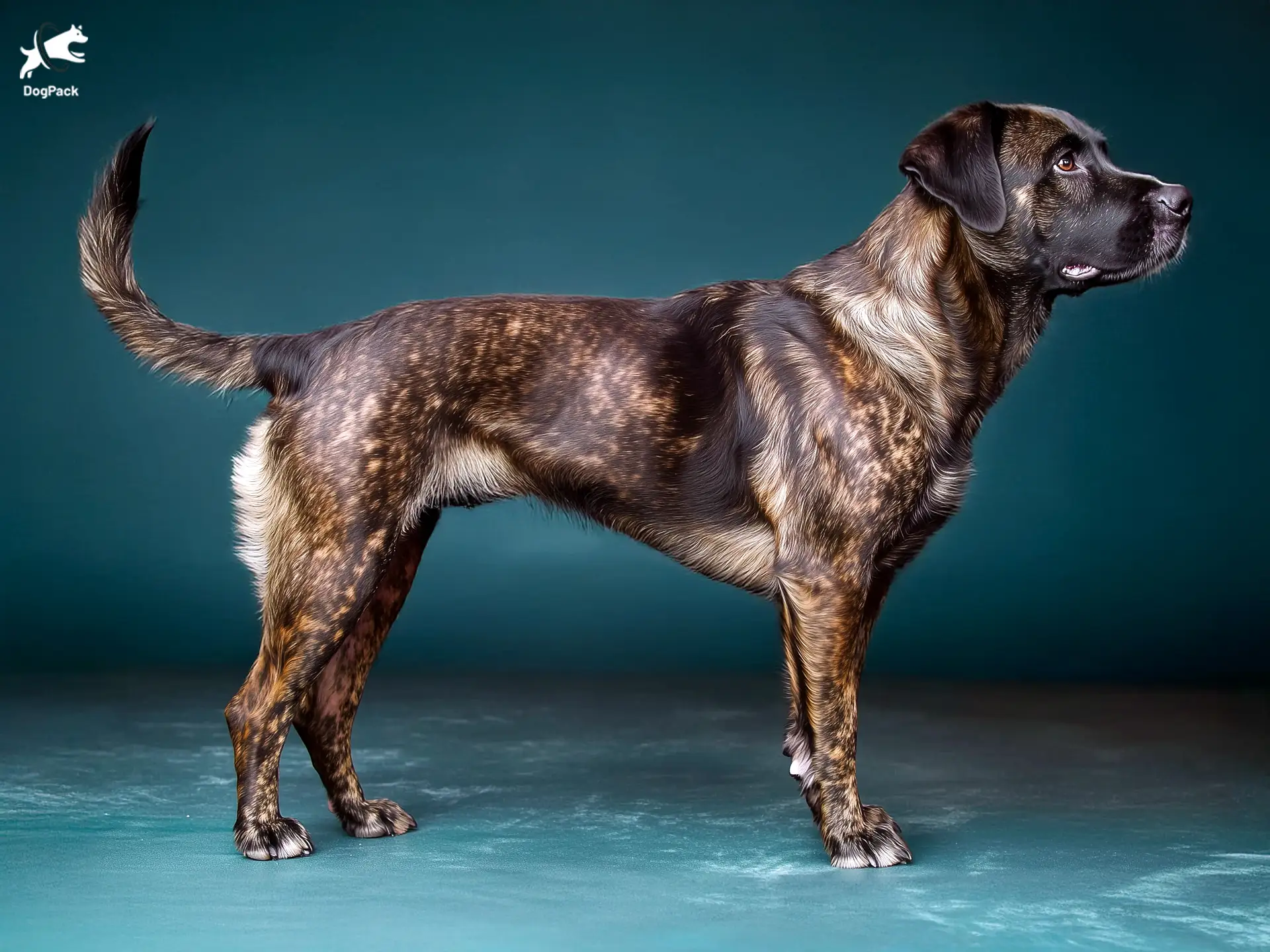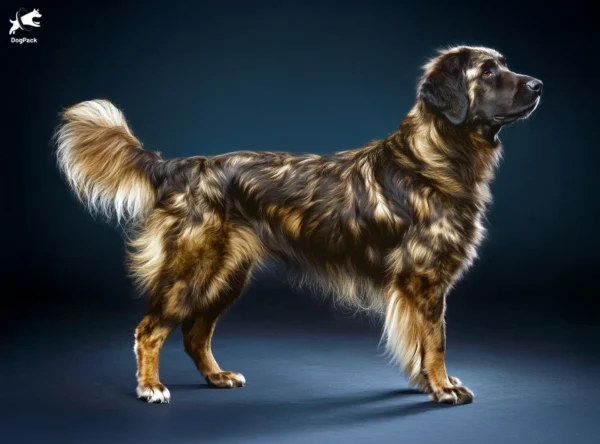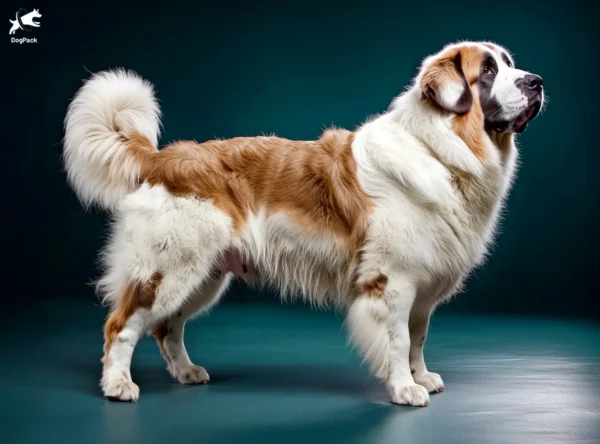Portuguese Cattle Dog Breed Info & Overview
This formidable protector from Portugal’s highlands is cherished for its alert nature, loyal heart, and guardian instincts. Confident yet surprisingly gentle with its family, this breed has gained a following among those who value both a steadfast companion and an enduring working partner. Adept at looking after livestock or family members, it’s prized for resilience.
Characteristics
Pictures
Breed History
Rooted in Portugal’s rugged northern mountains, this dog’s lineage stretches back centuries to when local shepherds needed a fearless guardian. Enduring cold climates and rocky terrain, these dogs became prized protectors of valuable livestock. Their history is intertwined with pastoral life, providing a loyal watch against predators and intruders alike.
The breed’s nickname, “Castro Laboreiro,” comes from a remote village where these protective canines thrived. Oral traditions credit this vigilant dog with saving countless herds, earning it near-legendary status among farmers. Over time, their reputation for unwavering commitment spread across Portugal’s countryside, solidifying the dog’s role as a steadfast working companion.
Though the Portuguese Cattle Dog remains less common outside its homeland, conservation efforts have helped preserve its heritage. Enthusiasts formed clubs to maintain breed standards and document valuable bloodlines. These devoted groups celebrate the dog’s cultural significance, ensuring that its proud legacy endures and that future generations can appreciate its remarkable qualities.
Temperament, Personality
Expect a bold personality with a sensitive side. Early socialization is crucial, as these dogs can be wary of unfamiliar people. Once they bond with you, their devotion is unwavering. They may be reserved around strangers, but they are typically calm and affectionate toward family members, relishing every moment of attention.
Because they were developed for guarding large flocks, they often remain watchful at home. Children who respect the dog’s boundaries find a loyal playmate. If raised alongside other household pets, they’re generally accepting, though some may show protective instincts around new animals. Living with a Portuguese Cattle Dog can be both humorous and heartwarming, given their subtle comedic expressions.
Though determined by nature, they’re not brash or reckless. These dogs exhibit a measured response to perceived threats, stepping up to defend but calmly assessing each scenario. Owners often share anecdotes of their keen emotional intelligence and ability to sense changes in mood. All in all, their temperament suits someone seeking a reliable and steadfast guardian.
Physical Characteristics
Tall and sturdy, these dogs have a proud stance that commands attention. Their muscular frame supports an athletic build capable of patrolling mountainous terrain. Often compared to a sentinel, they boast a calm, watchful gaze reflecting centuries of working heritage in Portugal’s hilly regions. Although they can appear imposing, they also carry an air of quiet confidence.
The coat is typically dense, weather-resistant, and often found in shades of gray or brindle. Because they originate from cooler, harsher climates, the outer layer is coarse to the touch, while the undercoat provides insulation. This coat not only protects them from the elements but also emphasizes their robust, no-nonsense vibe.
One distinguishing feature is their strong, broad head and keen, alert eyes. Ears tend to be medium-sized and set high, aiding in acute hearing. They carry their tail with a slight curve, emphasizing balance during long treks. A Portuguese Cattle Dog typically has the imposing silhouette of a guardian, but up close, subtle nuances reveal a kind, focused expression.
Health Issues
Most are robust, but some can be prone to hip dysplasia, which affects large breeds who navigate uneven terrain. Responsible breeders screen for this condition, helping ensure pups grow into healthy adults. Regular checkups are essential to catch any issues early, especially joint-related concerns that might be aggravated by active lifestyles.
Eye conditions such as progressive retinal atrophy occasionally crop up in certain lines. Early testing and tracking of family histories can help reduce risk. It’s wise to collaborate closely with a veterinarian for genetic screenings, tailored vaccinations, and ongoing monitoring of each dog’s overall well-being. Preventive care often makes all the difference.
The Portuguese Cattle Dog benefits from a high-quality diet and consistent exercise to maintain a healthy weight, which eases stress on joints. Keep an eye on any subtle changes like limping, fatigue, or weight loss. Consult reputable resources such as VCACares or PennHIP for broader insight on large-breed orthopedics and best practices in maintaining their vitality.
Grooming Needs
That thick coat may look low-maintenance at first, but weekly brushing is key to controlling loose hairs. When seasons change, they can shed more heavily, so an extra session or two each week helps keep fur tumbleweeds at bay. Because they worked in rugged terrains, a quick brush also helps remove dirt and debris lurking beneath the outer layer.
Bathing should be occasional, ideally every few months unless they’ve taken a particularly muddy romp. Over-bathing can strip protective oils from their double coat, leaving skin vulnerable. Focus on using gentle shampoos designed for thick-coated breeds. Following a bath, thorough drying is crucial to prevent any dampness lingering in their dense undercoat.
Nail trims, ear checks, and dental care round out the routine. Their active nature often keeps nails worn down, but monthly checks help catch overgrowth. Monitor ears for redness or odor, which could indicate an infection — especially in a dog that spends time outside. Overall, a moderate grooming schedule keeps the Portuguese Cattle Dog looking sharp and feeling great.
Exercise Requirements
Bred to roam with livestock and stand watch, they thrive on long walks, hikes, or even structured play sessions in a securely fenced yard. Shooting for at least 90 minutes of physical activity each day ensures they remain mentally and physically fulfilled. Without ample exercise, they can become restless, occasionally channeling energy into mischievous explorations.
Activities that engage their problem-solving instincts, like scent work or canine sports, can tap into their intelligence. Rural settings are ideal, but city dwellers who commit to frequent outings and space to move can still keep them happy. Some owners turn daily errands into “jobs” for their dog, letting them carry small packs or practice obedience drills along the way.
Because the Portuguese Cattle Dog is protective, mental stimulation goes hand in hand with exercise. Consider short but focused training sessions before or after a brisk walk. Tiring them out physically and mentally decreases the likelihood of boredom-barking or fence-pacing. These dogs love to feel purposeful; channeling their instincts ensures a calmer, well-adjusted companion at home.
Training Tips
Confidence is key when guiding this independent-minded guardian. Firm, consistent leadership helps them understand boundaries without squashing their natural protective drive. They respond best to positive reinforcement, where praise and treats highlight good behavior. Harsh corrections, by contrast, may create mistrust or stubbornness in such a proud breed.
Socialization from puppyhood exposes them to various environments, ensuring they learn to differentiate between real threats and normal daily sights. Gradually introducing friendly strangers, other dogs, and new noises or places can shape a well-rounded adult. This gentle acclimation also eases potential anxiety when meeting friends or heading out for a simple vet visit.
Short, engaging sessions keep their attention. Repetitive drills can lead to boredom, so vary the exercises to spark their curiosity. Obedience fundamentals like “sit,” “stay,” and “recall” provide a secure foundation for advanced commands. With the Portuguese Cattle Dog’s strong loyalty, it won’t be long before you’ve formed a respectful partnership built on mutual trust and understanding.
Nutrition, Diet
Because this breed is traditionally active, a well-balanced, nutrient-rich kibble or raw-based plan suits their metabolism. Focus on formulas high in protein, such as 25–28% protein content, and moderate fat levels for sustained energy. Look for quality meat sources like chicken, lamb, or fish as the primary ingredient, ensuring robust muscle maintenance and healthy organ function.
As adults weighing around 50–75 pounds, they often consume 3–4 cups of food per day, split into two meals. Highly active Portuguese Cattle Dogs may require a bit more to maintain an ideal physique. Monitor body condition regularly, adjusting portions if you notice weight gain or loss. Include calcium-rich elements to support joint health, especially during growth phases.
Some owners supplement with fish oil for coat quality and joint protection, though it’s wise to consult a vet before adding extras. Keeping treats nutrient-focused, like freeze-dried meats or vegetable-based snacks, can help avoid empty calories. If your schedule allows, rotating protein sources occasionally can keep the diet intriguing and ensure a broad range of essential vitamins and minerals.
Adoption, Breeders
Locating a Portuguese Cattle Dog may be a challenge, so patience is essential. Dedicated breed clubs and reputable breeders sometimes keep waiting lists due to the dog’s rarity. Always vet a breeder’s credentials: verify health screenings, discuss lineage, and confirm they place pups responsibly. Steer clear of anyone unwilling to show proof of care or to answer your questions thoroughly.
For those considering adoption, check specialized rescue organizations focused on Portuguese or working dogs. Occasionally, older dogs are rehomed when owners’ circumstances change, offering an opportunity to give a deserving canine a second chance. You can explore Sociedade Portuguesa do Cão de Castro Laboreiro for more historical data, or Adoptapet.com to stay updated on potential rescue listings.
Be sure any puppy or rescue you bring home has undergone health evaluations. You’ll also want to see how they interact with people, including children or other animals, if applicable. With such a rare breed, building a relationship with knowledgeable enthusiasts can guide you through early training, grooming, and health questions. That supportive network is invaluable during your journey with this remarkable dog.
Family Pet?
Though they excel in a rural setting, many adapt to family life well, provided they have room to stretch and consistent discipline. Engaging their drive to protect can be a plus if you’re after a watchful companion. Children who understand dog etiquette can form close bonds, as the breed enjoys being part of daily family routines.
Their protective streak can surface when visitors drop by, so early introductions and clear boundaries help avoid unnecessary tension. With household cats or other dogs, the dynamic hinges on socialization and personalities. Many owners praise their mellow side once all creatures settle into a daily rhythm, emphasizing the importance of setting positive habits from the start.
When raised with love and structure, a Portuguese Cattle Dog often radiates devotion. Families who appreciate a steadfast guardian that still manages to cuddle during downtime find them incredibly rewarding. They’re a breed that thrives on feeling useful, and parents can teach responsible children how to involve the dog in chores, ensuring everyone benefits from the bond.
Right For You?
Before committing, consider whether you have the time for daily exercise and ongoing training. This is not a casual couch companion; they crave tasks and purposeful roles. If you have plenty of space or enjoy outdoor hobbies like hiking, you’ll likely find a devoted sidekick ready to join in the adventure.
Those longing for a calm yet ever-watchful protector might feel an instant connection. However, if your household is constantly bustling with unfamiliar visitors, you’ll need a plan to manage the dog’s natural wariness. Patience is key, as their independent streak requires owners who respect the dog’s guardian instincts yet offer confident guidance.
If you’re drawn to a Portuguese Cattle Dog, be prepared for a rewarding and sometimes demanding journey. Their imposing look masks a tender heart that blossoms with firm but positive training. Households seeking unwavering loyalty and a dash of comedic charm will find them invaluable. Ultimately, they thrive in environments that celebrate their intelligence and strong protective nature.
Conclusion
The Portuguese Cattle Dog offers an impressive blend of courage, loyalty, and intelligence, making it an ideal breed for those seeking a vigilant guardian that can still relax with the family. Proper socialization and mental enrichment will let their best qualities shine. If you’re after a dog that steps up to protect yet remains affectionate at home, this might be your perfect match.
FAQs
-
What gives the Portuguese Cattle Dog its distinctive “wolf-like” appearance?
The Portuguese Cattle Dog often has a brindled coat, almond eyes, and erect ears, creating a striking resemblance to wild canines. This appearance helped deter predators in its native mountain regions and remains a defining trait of the breed today.
-
Is the Portuguese Cattle Dog still used for livestock protection in Portugal?
Yes, the Portuguese Cattle Dog is still used in remote Portuguese regions to guard cattle from wolves and thieves. Though rare, it remains valued by traditional herders for its territorial instincts and unwavering loyalty to its flock.
-
How does the Portuguese Cattle Dog behave with unfamiliar guests?
The Portuguese Cattle Dog is famously aloof and watchful with strangers. Bred as a guardian, it tends to observe rather than approach, only warming up once trust is earned—making it a natural watchdog without excessive aggression.
-
Is the Portuguese Cattle Dog suitable for off-leash activities?
Due to strong territorial and protective instincts, the Portuguese Cattle Dog may not be ideal for off-leash play in open areas. A securely fenced yard or leash-controlled environment is best to ensure safe behavior with unfamiliar people or dogs.
-
What registry officially recognizes the Portuguese Cattle Dog?
The Portuguese Cattle Dog is officially recognized by the Fédération Cynologique Internationale (FCI) as a Portuguese breed. However, it remains unrecognized by the AKC, contributing to its rarity outside of Portugal.
Breed Ratings
Sharp problem-solvers, they quickly learn new skills but can exhibit an independent streak when tasks aren’t engaging.
They enjoy interactive play but can be reserved, focusing more on protective duties than constant fun and games.
Built for intense work, they require ample exercise to channel their drive, though they settle when tasks are complete.
Seasonal shedding can be moderate, so regular brushing keeps hair under control.
Instinctively protective, they’re not primarily hunters but can chase small animals if not well-socialized.
Their thick coat demands routine brushing, but overall grooming needs aren’t excessive.
Eager to please a firm, consistent leader, they respond well to positive methods and mental challenges.
They’re independent but form close bonds, so excessive isolation can lead to bored or anxious behavior.
Likely to bark when sensing threats, but not overly vocal if trained and socialized properly.
Generally low droolers, though occasional saliva is normal, especially after vigorous play.
Can coexist with other dogs when introduced young, but caution is advised with unfamiliar canines.
Generally sturdy, but watch for hip dysplasia or minor eye issues common in large working breeds.













